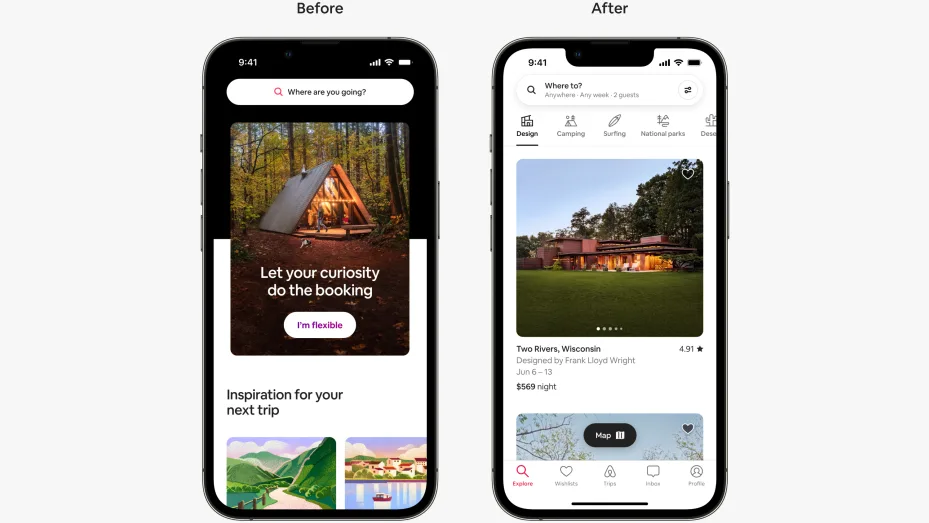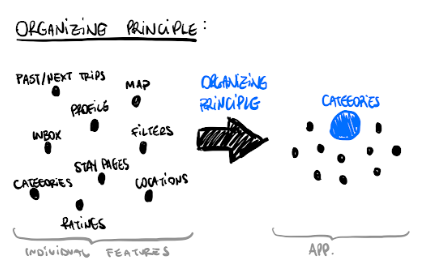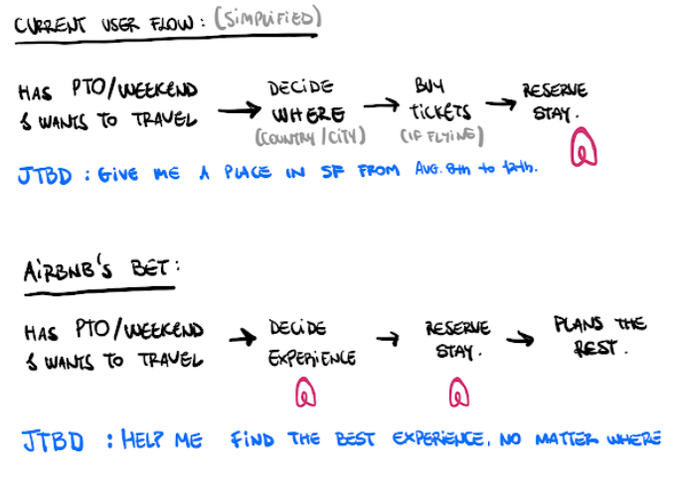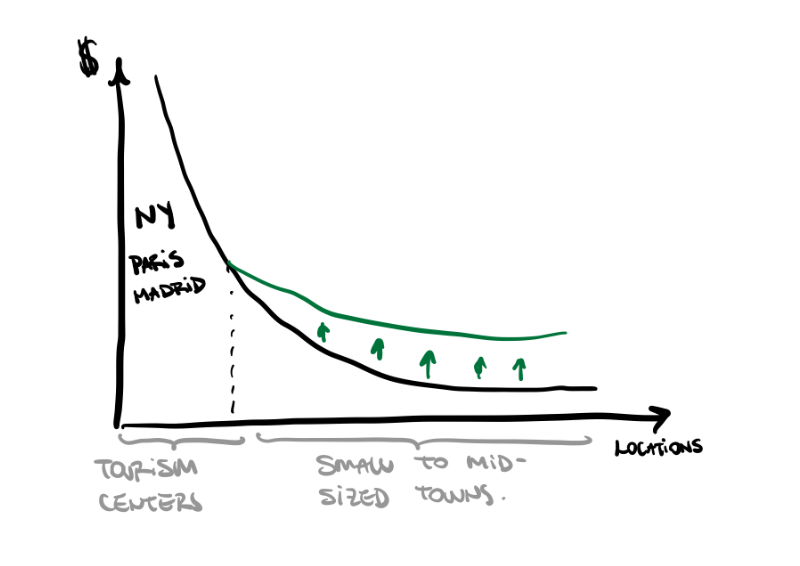

The business power of design: understanding Airbnb’s redesign
source link: https://uxdesign.cc/the-business-power-of-design-understanding-airbnbs-redesign-9f835d282bf9
Go to the source link to view the article. You can view the picture content, updated content and better typesetting reading experience. If the link is broken, please click the button below to view the snapshot at that time.
The business power of design: understanding Airbnb’s redesign
In software, design can be one of the most important levers of growth.

On May 11th, 2022, Airbnb announced a redesign that, according to CEO Brian Chesky, was the app’s “biggest change in a decade”.
It was met with mixed emotions: some people loved it while others didn’t even understand what changed.
I’m a believer.
Designers are comfortable understanding how design decisions impact user behavior.
In this particular case, what fascinates me is how seemingly small design changes have the potential to deeply impact a business and likely the travel industry as a whole.
A careful look at it can let us understand how and will make us more empowered designers. Let’s break it down.
What changed?
Among other announcements, organizing the app around Categories was the biggest change.
On the new version, the first thing you see once you open the app is the standout properties of each type and a navigation menu to move between the categories.

Taken from their summer release blog post, the rationale for the change is the following:
“Millions of people are now more flexible about where they live and work. But travel search has been the same for 25 years — you enter a location and dates into a search box.
Most of us can only think of a few dozen cities to type into the search box, but there are Airbnbs in 100,000 towns and cities around the world.
That’s why we’re introducing a new way to search designed around Airbnb Categories, making it easy to discover millions of unique homes you never knew existed.”
It might not seem like a huge difference, so let’s look at it more carefully.
What is an Organizing Principle?
Apps are complex: lots of features to put on a 6 inches screen trying to solve different problems.
The goal is to design against complexity and elegantly solve the user’s pain points.
But how do we do that? What’s the best way to organize it all?
That’s the question an organizing principle helps to answer.
From Wikipedia, it means “a central reference point that allows all other objects to be located”.

A good example of this is how most modern cities follow the organizing principle of the Grid plan.
The same way, Airbnb’s central reference point is now their categories.
Deciding on an app’s organizing principle takes understanding the customer’s job-to-be-done (JTBD).
If we’re aiming for great design, the organizing principle must be in service of the main problem you’re trying to solve.
Looking at the new design and following the company’s statements, Airbnb is clearly betting on a new main JTBD: a way of travelling where you start with the type of experience you want.
Traditional travelling starts by deciding dates and a location to go. On that model, Airbnb enters last.
They are hoping to flip that:

The contrast is clear once we compare Airbnb’s web version of the home screen with Expedia’s, which tries to solve for the older model:

Most of Airbnb’s screen real estate is now dedicated to help you decide what kind of experience you want to have: camping, surfing, going to a national park and so on.
That way, they are making it easier for the journey to start with Airbnb.
“Well, so what?” you might ask.
Business Impacts of Design Decisions
In software, design can be one of the most important levers of growth.
Let’s see how those changes might impact the business and industry as a whole.
1. Impact on long tail revenue
Cities that would otherwise never be visited will have more discoverability since what seems to matter for the algorithm is how appealing the property is and how it is positioned in a category.
If users start by looking for a specific experience, it will matter less if it is not in NY or Paris, so more revenue might flow to those smaller towns.

This might have some sort of flywheel effect too:
If houses in otherwise non touristic towns have more chances of being booked, there will be a bigger incentive for hosts to build awesome stays anywhere or even just organizing their properties around a specific category to put on the platform.

2. Quality pressure on hosts

It’s been over 2 weeks since the redesign was launched and some impacts on hosts can already be seen.
On a recent video for his YouTube channel, Robert Abasolo (@robuilt), a popular Airbnb host, mentions how other property owners have been complaining about discoverability after the redesign.
They speculate that Airbnb have been favoring more “Instagramable” properties, which impacted their occupancy rates.
Although anecdotal evidence, it makes sense in light of the company’s new strategy and is not a bad thing.
In the video, Robert mentions how the solution for hosts is to “step it up and do better”.
That’s a positive outcome for guests and for Airbnb as a company.
3. Long-term change in travel budgeting preferences
If it’s easy to find great experiences close to where you are, willingness to pay for tickets might go down while willingness to pay for stays might go up.
This change in behavior might take longer to materialize, but it’s possible to imagine.
In a way, Airbnb would be taking money out of airlines too.
Conclusion
To me, the genius of it is that from the user’s perspective nothing is being taken away. People can still look for stays on specific dates or location.
Airbnb is just, elegantly, making it easier and incentivizing the possibility of exploring something different.
The biggest lesson I take is how seemingly small changes in design have the potential to change the way people behave and might impact an industry as a whole.
There are lots of assumptions going on here, but Airbnb’s design team is one of the greatest in the world. It’s natural to believe a lot of testing and thinking went into the change.
But only the future will tell us how big of an impact it will have and if this will actually be a paradigm-shifting move.
Thanks for reading it!
Recommend
About Joyk
Aggregate valuable and interesting links.
Joyk means Joy of geeK